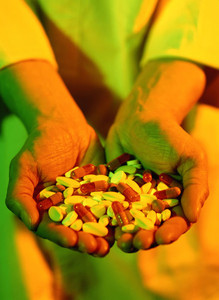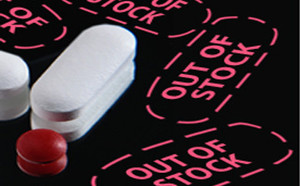Modelling of the cost savings from the use of generic Gleevec (imatinib) in the US finds that US payers saved US$2.5 billion in years 1 and 2 following patent expiry. Projected savings in years 3 to 5 exceed US$12 billion, even without step-edit formulary management [1].
Imatinib is a small molecule treatment for chronic myelogenous leukaemia (CML), which is a cancer of white blood cells. Imatinib is a first-generation tyrosine kinase inhibitor (TKI), which works by targeting the BCR-ABL fusion protein underlying CML.
The development of imatinib (marketed as Gleevec by Novartis) drastically changed the treatment of CML and has significantly improved survival rates for the condition, making CML the first cancer in which a standard medical treatment may give the patient a normal life expectancy.
However, pricing of the drug has limited access. In 2001, the year of US Food and Drug Administration (FDA) approval, the drug was priced at US $30,000 a year. Prices increased to US $92,000 per year in 2012 and US $120,000 in 2016. This led to complaints from physicians and patients.
Following patent expiry, the first generic version of imatinib entered the US market in February 2016. Since then, US payers have started to make cost savings, however generics prices took two years to fall substantially.
A previous study [2] modelled the projected impact of genetic imatinib over the first two years, estimating that the cost-savings would be US$6.8 million in a commercial plan and US$22.9 million in a Medicare plan.
The new study [1] updates this model to assess the real and projected impact of the market entry of generic imatinib on cost savings over a 5-year period. The study quantified cost savings from substitution of brand-name imatinib with generic imatinib for a hypothetical 1-million-member commercial plan and a 1-million-member Medicare plan, as well as at the national level for all commercially and Medicare insured patients.
The researchers also looked at the impact of step-edit strategies, whereby lower-cost drugs must be prescribed before a patient can move up a ‘step’ to a more expensive medication.
At the national level, generic imatinib saved US payers US$2.5 billion – or 13% of total spending on TKIs – in years 1 and 2. The total projected savings for years 3–5 were US$12.2 billion in total. If passive substitution was used, savings were projected to grow to 39%, with an additional 1.7% savings from step-edit restrictions.
For the 1-million-member commercial plan, the modelling showed that generic imatinib saved US$0.5 million from pharmacy spending on TKIs in year 1 and US$3.9 million in year 2. Projected savings in years 3, 4 and 5 increased to US$7.8 million, US$8.3 million and US$8.6 million, respectively. Step-edit strategies were projected result in incremental savings of US$0.3 million each year in years 3–5.
The 1-million-member Medicare plan saved US$1.7 million and US$14.1 million from the entry of generic imatinib in years 1 and 2, respectively. For years 3, 4 and 5, projected savings were US$27.8 million, US$29.5 million and US$30.8 million, respectively. Use of a step-edit strategy in this context was projected to add US$0.9 million in savings each year for years 3–5.
Overall, the results show that generic imatinib is likely to generate significant cost savings to US payers over the coming years. Over the 5-year period modelled, the estimated savings are US$15 billion in total, even without step-edit formulary management. Indeed, the vast majority of potential savings result from the market entry of the generics alone, with limited additional savings gained from step-edit therapy.
The authors suggest formulary management schemes that restrict access to second-generation TKIs are unlikely to generate significant extra savings. They say payer cost-saving strategies should instead be based on evidence-based guidelines and be focused on the proper use of TKIs.
They also recommend initiatives to improve medication adherence, meet guideline recommendations on molecular monitoring, and optimize treatment selection. Such initiatives would lower care costs while also improving patient outcomes.
Conflict of interest statement
Some of the authors are associated with pharmaceutical companies, including Bristol-Myers Squibb. The disclosure statement can be read in full in the paper [1].
Editor’s comment
Readers interested to learn more about generic imatinib are invited to visit www.gabi-journal.net to view the following manuscript published in GaBI Journal:
Patent expiry and costs for anti¬cancer medicines for clinical use
Readers interested in contributing a research or perspective paper to GaBI Journal – an independent, peer reviewed academic journal – please send us your submission here.
Related articles
Efficacy and safety of generic imatinib after switching
Treatment of chronic myeloid leukaemia patients with generic imatinib in Algeria
References
1. Bloudek L, Brokars J, David C, Makenbaeva D. Realized and projected cost savings from the introduction of generic imatinib, with minimal additional savings to payers through formulary management. Blood. 2018;132(Supplement 1):3533.
2. Kenzik K, Bhatia R, Bhatia S. Pricing of first and second generation tyrosine kinase inhibitors (TKIs) pre- and post-transition of imatinib to generic status. Blood. 2019;134(Supplement_1):2140.
Permission granted to reproduce for personal and non-commercial use only. All other reproduction, copy or reprinting of all or part of any ‘Content’ found on this website is strictly prohibited without the prior consent of the publisher. Contact the publisher to obtain permission before redistributing.
Copyright – Unless otherwise stated all contents of this website are © 2020 Pro Pharma Communications International. All Rights Reserved.








 1
1











Post your comment